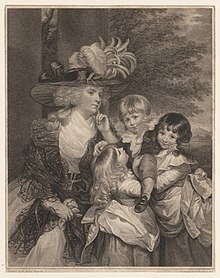Ladysmith
Emnambithi | |
|---|---|
 Ladysmith central business district | |
| Coordinates: 28°33′35″S 29°46′50″E / 28.55972°S 29.78056°E | |
| Country | South Africa |
| Province | KwaZulu-Natal |
| District | Uthukela |
| Municipality | Alfred Duma |
| Established | 1850[1] |
| Area | |
| • Total | 84.13 km2 (32.48 sq mi) |
| Population (2011)[2] | |
| • Total | 64,855 |
| • Density | 770/km2 (2,000/sq mi) |
| Racial makeup (2011) | |
| • Black African | 73.3% |
| • Indian/Asian | 15.0% |
| • White | 8.3% |
| • Coloured | 2.9% |
| • Other | 0.5% |
| First languages (2011) | |
| • Zulu | 64.3% |
| • English | 22.8% |
| • Afrikaans | 6.3% |
| • Sotho | 2.2% |
| • Other | 4.5% |
| Time zone | UTC+2 (SAST) |
| Postal code (street) | 3370 |
| PO box | 3370 |
| Area code | 036 |
| Website | ladysmith.kzn.org.za |
Ladysmith is a city in the Uthukela District of KwaZulu-Natal, South Africa. It lies 230 kilometres (140 mi) north-west of Durban and 365 kilometres (227 mi) south-east of Johannesburg. Important industries in the area include food processing, textiles, and tyre production. Ladysmith is the seat for both the Alfred Duma Local Municipality and Uthukela District Municipality.
The town was named after Juana María de los Dolores de León Smith, also known as "Lady Smith," the Spanish wife of Sir Harry Smith, the Governor of the Cape Colony from 1847-1852. It saw numerous actions during the Second Boer War, when after numerous small skirmishes the town was besieged by Boer forces on 2 November 1899. After three British attempts to relieve the defenders and one Boer attempt to take the town all failed, the siege was eventually broken on 28 February 1900. Both Winston Churchill and Mahatma Gandhi were present at the siege, the former as a war correspondent and the latter as a stretcher-bearer.
In 1900, the unincorporated town of Oyster Harbour on the east coast of Vancouver Island, British Columbia, Canada, was renamed Ladysmith by James Dunsmuir in honour of the lifting of the siege of Ladysmith.

In 2023, it was proposed to renamed the city to uMnambithi.[3]
- ^ Robson, Linda Gillian (2011). "Annexure A" (PDF). The Royal Engineers and settlement planning in the Cape Colony 1806–1872: Approach, methodology and impact (PhD thesis). University of Pretoria. pp. xlv–lii. hdl:2263/26503.
- ^ a b c d "Main Place Ladysmith". Census 2011.
- ^ Newman, Latoya (13 December 2023). "Mixed feelings on possible renaming of Ladysmith". Independent Online. Retrieved 30 March 2024.

